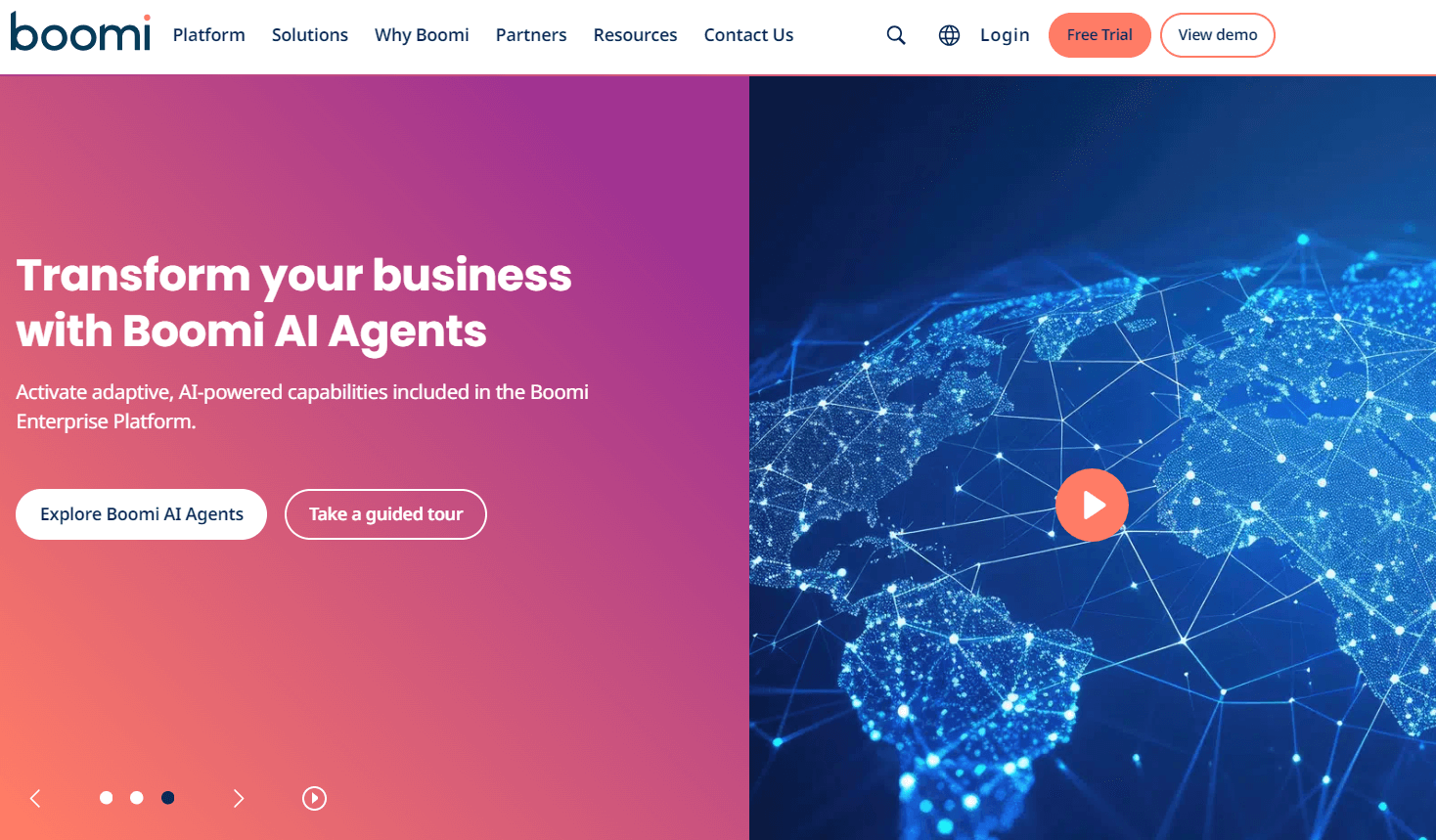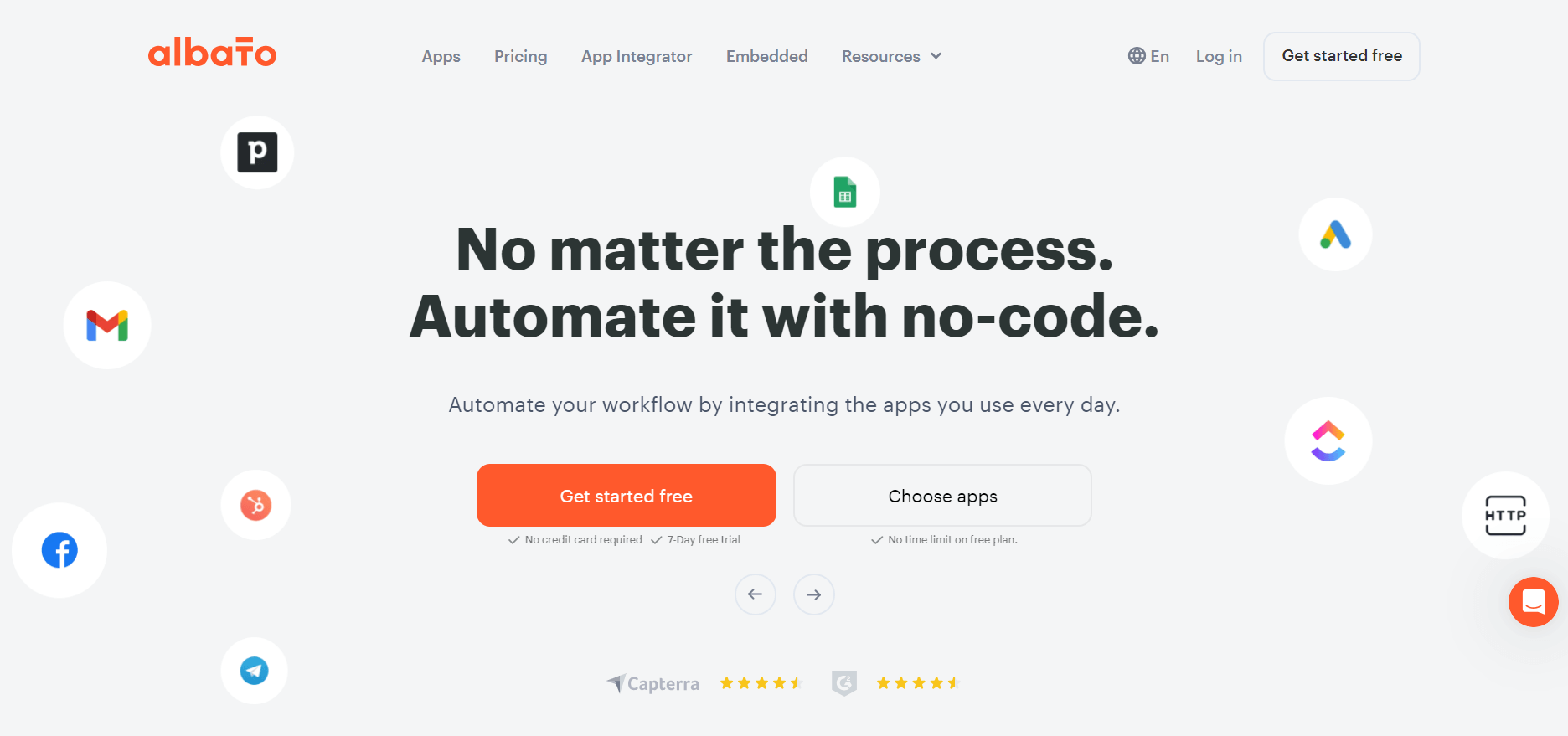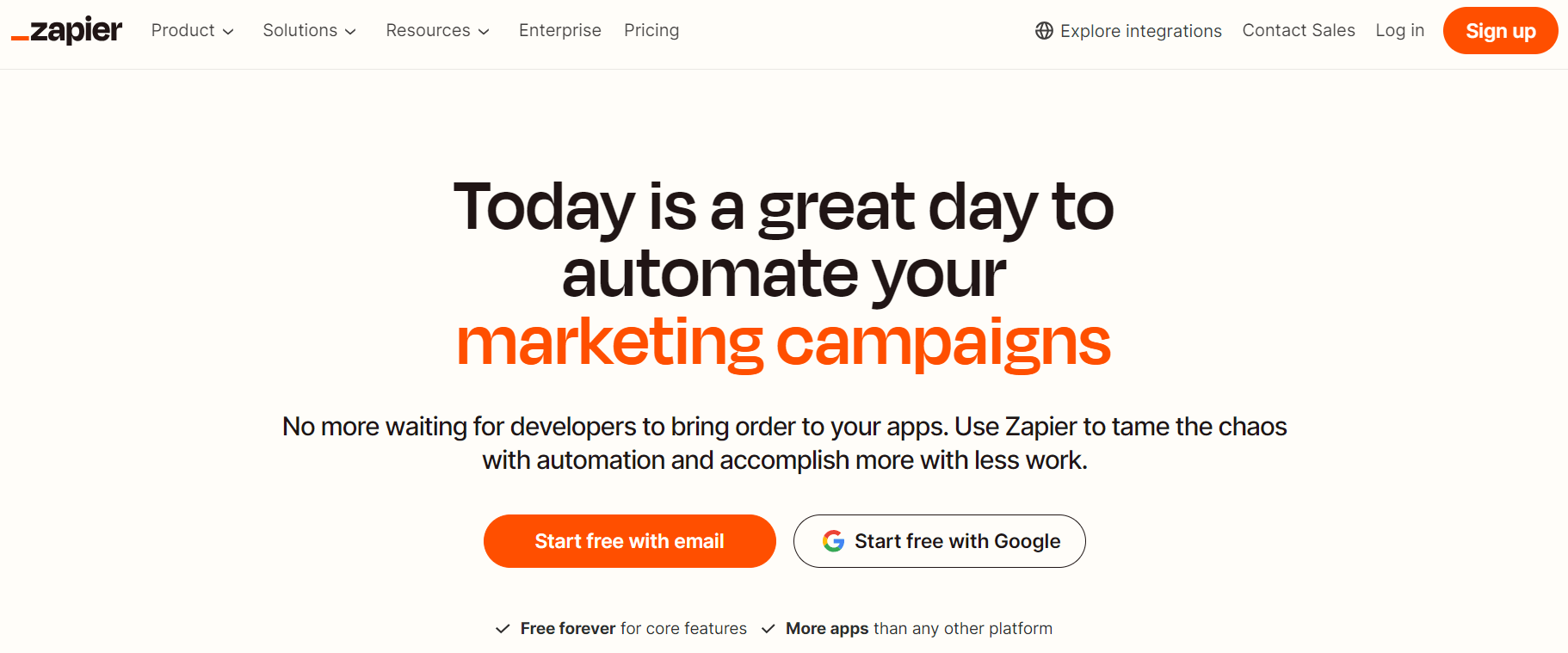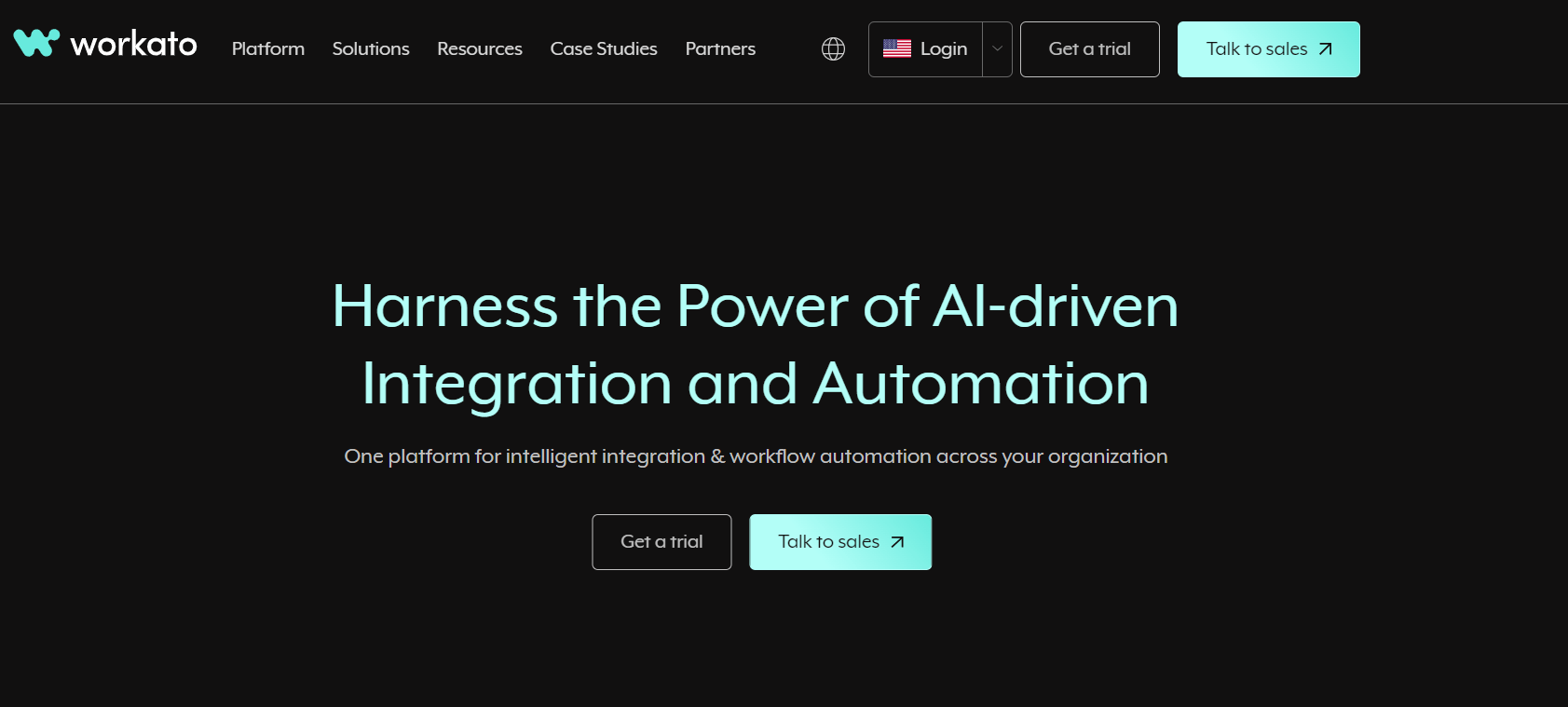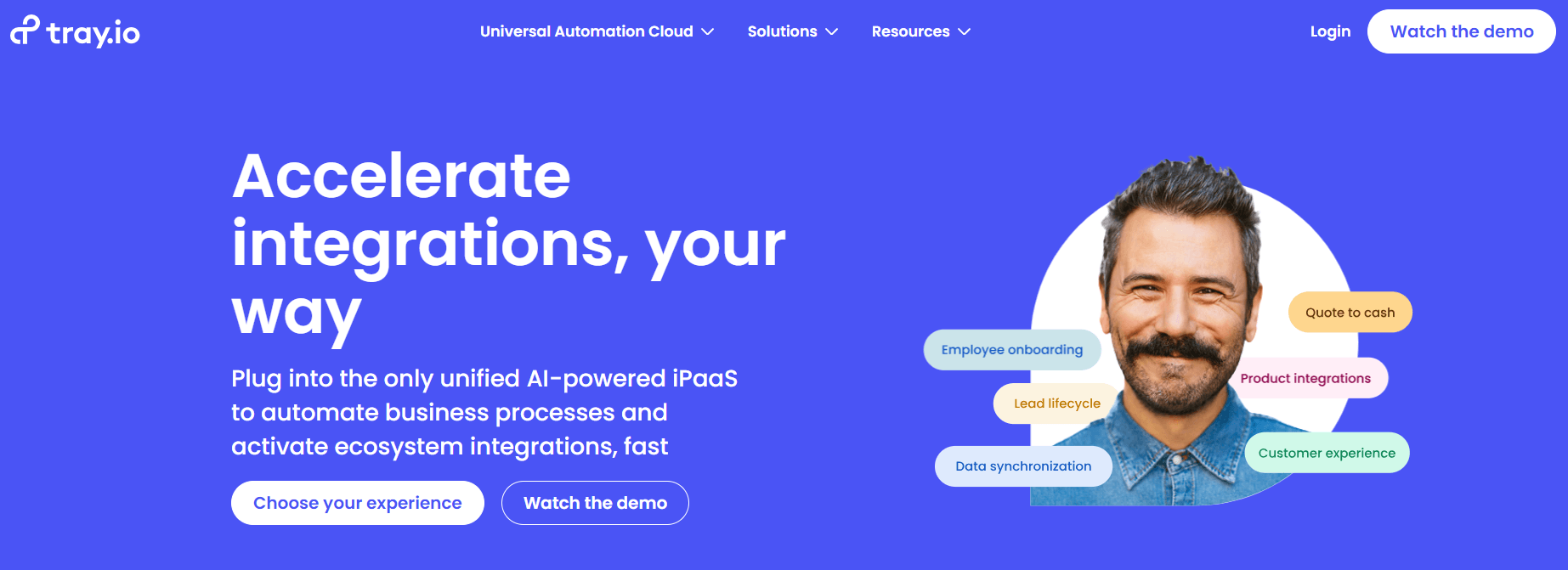Best iPaaS Solutions for 2024: Comparison, Pros & Cons
In today’s rapidly evolving digital landscape, businesses of all sizes are turning to integration platform as a service (iPaaS) solutions to improve work efficiency. Whether you are a small venue booking business looking for simplicity or a large ecommerce enterprise in need of scalable solutions, we’ll share some insights to help you make an informed decision.
What is iPaaS
An Integration Platform as a Service (iPaaS) is a cloud-based solution used to integrate various applications into a cohesive workflow. Acting as the “glue” that binds different tools, iPaaS connects and automates them, ensuring seamless communication through each application’s API.
Why Choose iPaaS
- User-friendly interface. iPaaS solutions typically feature intuitive low-code or no-code interfaces. This allows even non-technical users to manage integrations easily.
- Reduced development dependency. These platforms enable business users to handle integration tasks. This speeds up the implementation process and reduces overhead and dependencies on the IT team.
- Versatile integration capabilities. iPaaS can handle both cloud-based and on-premises applications. Thus, they are suitable for businesses with diverse technological environments.
- Problem solving. These tools solve integration problems and fill the gaps in business processes, ensuring seamless work between teams.
Common Components of iPaaS
- Connectors. Pre-built connectors that facilitate integration with applications and platforms.
- Workflow automation. iPaaS enables designing, orchestrating, and automating multiple workflows.
- API management. Tools for creating, managing, and monitoring APIs, including features for API security, versioning, and scalability.
- Monitoring and analytics. Real-time monitoring and analytics tools that let you track the performance and health of integrations and resolve issues.
- Development environment. An integrated development environment (IDE) for building, testing, and deploying integrations, often with low-code or no-code capabilities.
Best iPaaS Software in 2024
1. Boomi
Boomi is an IPaaS solution that supports a wide range of applications and data sources. Its target audience is IT teams, meaning that you need to have a basic understanding of coding to utilize its capabilities.
Boomi’s features include:
- visual block diagram editing;
- library of ready-made templates and connectors for over 2000 platforms;
- multiple APIs like REST API, SOAP API, EDI API, and MDM API.
Advantages
- Comprehensive integration. Boomi provides thorough integration opportunities. This makes it a strong choice for businesses needing diverse integrations.
- Professional system for IT teams. The platform offers powerful data management and highly customizable systems ideal for a tech person.
Disadvantages
- Higher cost. Boomi tends to be on the pricier side, which can be a significant drawback for smaller businesses or organizations with limited budgets.
- Complex features. While Boomi’s advanced features are beneficial for IT teams, they can also be quite complex. This can result in a steep learning curve: the platform requires significant time and effort to master.
Pricing. The cheapest plan costs $50 per month. The total cost can increase depending on how many applications and connections are used.
2. Albato
Albato is a no-code iPaaS. It is particularly notable for its user-friendly interface. The tool is typically used by small and medium-sized businesses.
Albato’s features include a block-based interface and integration with over 600 applications. Also, Albato has an exclusive App Integrator that lets users integrate new apps into Albato’s ecosystem without writing a single line of code.
Advantages
- Budget-friendly. Albato’s pricing suits startups and individuals. The tool provides value without compromising essential features.
- Easy to learn. Users can quickly get up to speed and start creating workflows without special training or technical expertise.
- Free support. All customers can resolve issues and get help without additional charges.
Disadvantages
- Limited integrations. Compared to other platforms, Albato supports fewer third-party applications than similar platforms.
- Limited number of templates. This can slow down the setup process for users who rely on ready-made templates to quickly implement common workflows.
- Block-based interface. While intuitive for some, it may be seen as restrictive or less flexible by others. Advanced users might find it limiting.
Pricing. Basic plan costs $19 per month or $13 per month if you pay annually.
3. Zapier
As of today, Zapier is probably the most popular iPaaS. It has integrations with over 6,000 apps. Zapier allows users to create “Zaps” that connect apps to perform specific tasks. These can range from simple single-step to sophisticated multi-step actions. Also, Zapier provides a drag-n-drop interface.
Advantages
- Convenient app integration. Zapier enables seamless integration between thousands of apps, allowing you to connect tools without extensive technical knowledge.
- Lots of resources. Zapier is perfect for non-experienced users as it offers various guides and tutorials for leveling up your skills. There’s also a community where users can ask questions and share their expertise.
Disadvantages
- Limited free version. The free tier of Zapier offers very limited functionality, including only two-step Zaps and no support team.
- Limited advanced features. While Zapier is easy to use for simple tasks, setting up more complex, multi-step workflows can be challenging.
- Overwhelming interface. Navigating the platform and setting up “Zaps” may require a steep learning curve.
Pricing. Professional Plan costs $29.99/month for 750 tasks. Team Plan starts at $103.50/month, offering more features and 2,000 tasks.
4. Celigo
Celigo focuses on providing user-friendly tools for automating business processes. It offers a library of pre-built integrations, especially for e-commerce and ERP systems.
Celigo’s features include:
- user-friendly drag-n-drop interface;
- ability to customize integrations using programming languages like JavaScript;
- ready-made connectors for NetSuite, Jira, Salesforce, and other platforms.
Advantages
- Versatile integration capabilities. Celigo even offers a specialized Integration Marketplace where businesses can discover new integrations for their applications.
- User-friendly interface. Designed to be accessible to non-technical users, Celigo features a straightforward, easy-to-navigate interface. This simplicity speeds up the deployment of integrations and minimizes the need for extensive technical knowledge.
- Cost-effective options. Celigo charges users depending on what applications they are using. This makes it a more budget-friendly option for businesses just starting with integration needs.
Disadvantages
- Learning curve. Despite its user-friendly interface, Celigo can present a steep learning curve for more complex integrations, especially for inexperienced users.
- Error management. Debugging and resolving issues can be challenging, particularly for users who are not deeply familiar with the system. This complexity can lead to delays in addressing errors.
Pricing. Celigo’s pricing depends on the applications you’re going to use. Detailed pricing information is provided upon request.
5. Workato
Workato is a cloud-based automation platform known for its advanced features and support of various platforms. Thus, Workato can meet quite complex business needs.
Workato provides a visual editor that solves complex tasks like branching and data transformation. Also, Workato offers a machine learning system that uses historical data for the optimization of workflows.
Advantages
- Complex automations. Workato can handle more sophisticated workflows and intricate integrations, providing robust tools for data mapping and transformations.
- Customization opportunities. The platform offers extensive customization options. This flexibility enables businesses to create highly specific and efficient workflows.
Disadvantages
- Steeper Learning Curve. Workato’s advanced features come with a significant learning curve. Some users, especially those new to automation tools, may find it challenging to navigate and fully utilize the platform without substantial time and effort invested in learning.
- Requires more resources to manage. Implementing and maintaining Workato’s solutions often demands considerable resources. This includes both time and technical expertise, which can be a strain on smaller businesses or those with limited IT staff.
- Not transparent pricing. Workato’s pricing structure is not always clear. It makes it difficult for businesses to predict costs accurately and compare Workato with other automation tools.
Pricing. Workato has custom pricing based on specific business needs and scale. That’s because the platform is mainly focused on sophisticated integrations.
6. Tray.io
Tray.io is a flexible iPaaS solution that supports complex automation needs. It has advanced features that could remind you of Workato. However, it has quite a user-friendly interface like Zapier.
Tray.io has options like branching and looping connections. It also provides a visual editor for creating workflows.
Advantages
- Comprehensive integration capabilities. Tray.io supports a wide variety of integration options. It allows users to connect numerous applications and services seamlessly. This versatility makes it suitable for companies with diverse integration needs.
- Customizable workflow configuration. Users can create custom workflows to solve specific problems.
Disadvantages
- High cost. Tray.io’s pricing can be quite high, which may be a barrier for individuals and startups.
- Learning curve. The platform requires a considerable amount of time and effort to master, potentially delaying the implementation of automation solutions.
- Takes too many resources. This requirement can strain smaller organizations or those with limited IT staff.
Pricing. There are three pricing plans: Professional, Team, and Enterprise. The details are provided upon request.
Choosing the Right iPaaS Solution
Ultimately, the choice depends on your specific business needs, budget, and your team’s technical expertise. Some users would prefer a simple solution with a more gamified and user-friendly approach while others look for a robust tool intended for seasoned experts.
Use the table below to choose the perfect iPaaS platform.
Boomi | Albato | Zapier | Celigo | Workato | Tray.io | |
Pricing | Starts at $50 | Starts at $13-$19 | Starts at $29.99 | Custom | Custom | Custom |
Integrations | Over 200M | 600+ | 6,000+ | 300+ | 100,000+ | 700+ |
Required expertise | Expert | Beginner | Beginner | Advanced | Advanced | Advanced |
Perfect for | Large enterprises and IT-centric companies | Small to medium-sized businesses | Small businesses and startups | E-commerce businesses and mid-market companies | Medium and large businesses | Tech companies and marketing agencies |

